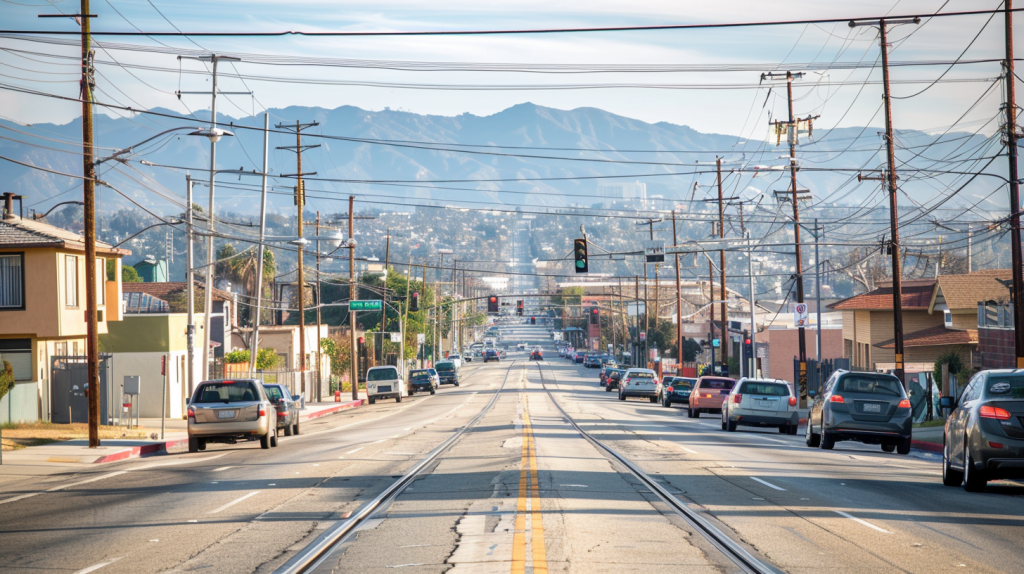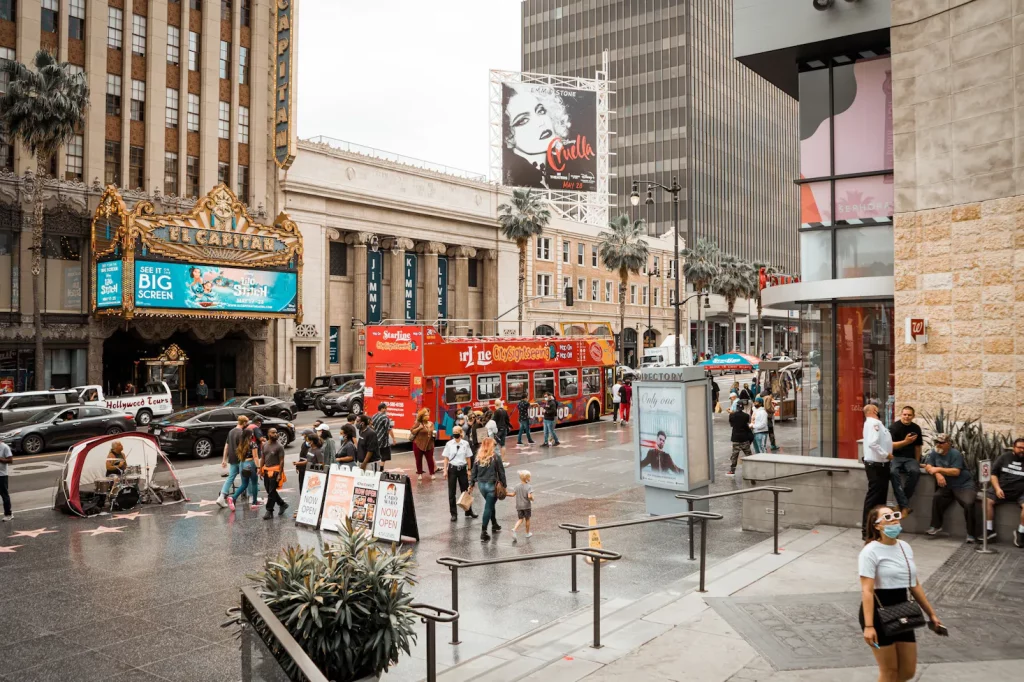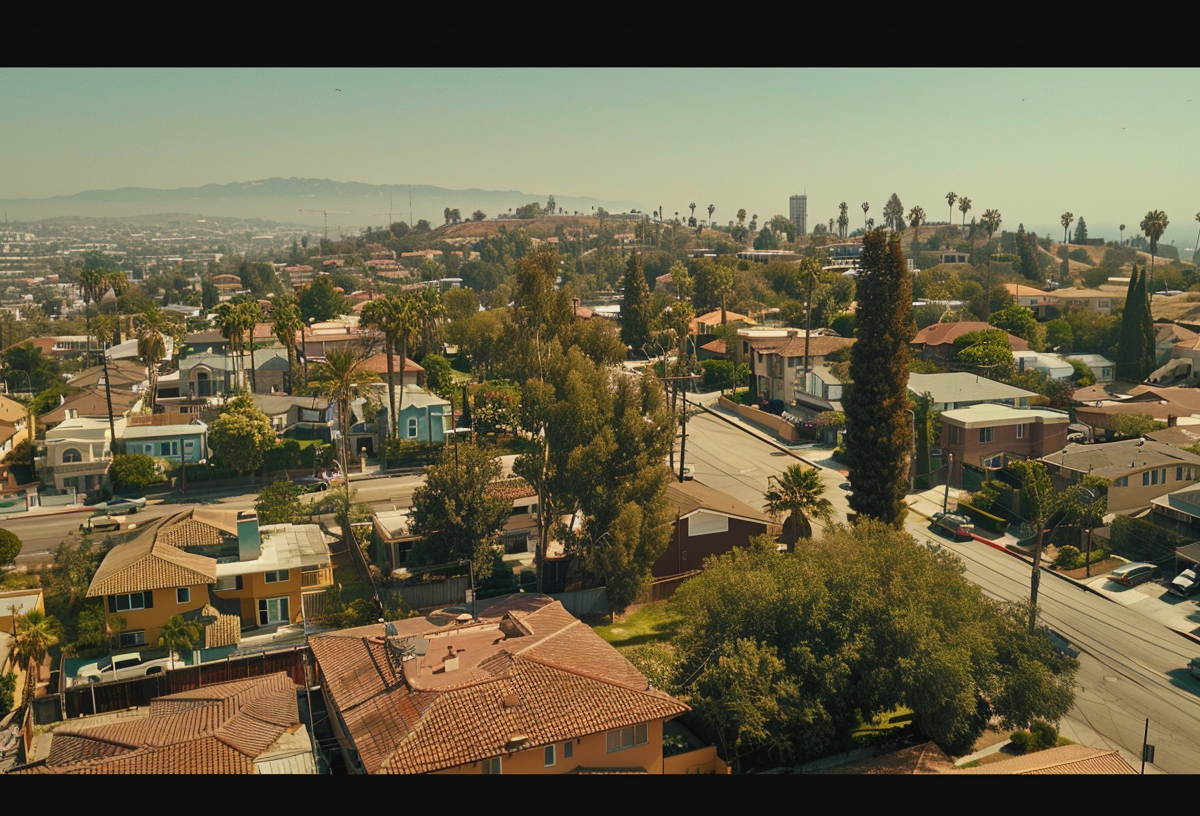East LA is a vibrant neighborhood with a rich cultural scene, but is being around in this neighborhood safe?
Don’t let safety concerns hold you back from experiencing the unique charm of this dynamic community.
While East LA may have had its share of challenges in the past, the reality today is far more reassuring.
With some awareness and practical precautions, you can confidently navigate the streets and immerse yourself in the captivating sights, sounds, and flavors of East LA.
Join us as we share essential tips and insights to help you stay safe while discovering this fascinating neighborhood’s hidden gems.
Get ready to embark on an unforgettable journey through the heart of East Los Angeles!
East LA: A Closer Look at Safety and Community

High crime rates have often marred East LA’s reputation, but recent statistics paint a different picture.
A closer examination reveals a rising neighborhood, shedding old stereotypes for a new identity.
1. Crime Trends
Data from the Los Angeles Police Department shows a consistent decline in violent crimes like homicides, robberies, and aggravated assaults, marking East LA as an increasingly safer place to live and visit.
2. Media vs. Reality
Despite factual improvements, sensational media stories often overshadow the true essence of East LA, focusing on gang violence and crime.
This portrayal clashes with the everyday experiences of its residents.
3. Community Voice
Locals and community leaders advocate for a narrative reflecting their neighborhood’s true spirit, emphasizing strong community bonds and a collective effort to enhance safety.
Community Initiatives are Driving Change

Active community programs are pivotal in transforming East LA into a safer neighborhood. These initiatives harness the power of collaboration between residents and law enforcement.
1. Safe Passage Program
The “Safe Passage” program in Boyle Heights ensures students travel safely to and from school, showcasing the effectiveness of community-driven safety measures.
2. Understanding East LA’s Safety Dynamics
To grasp the full scope of safety in East LA, it’s crucial to look beyond the headlines and acknowledge the significant strides made through local efforts.
3. Ongoing Challenges
While improvements are evident, challenges persist.
Community engagement is key to overcoming these obstacles and enhancing the neighborhood’s safety.
Navigating Safety in Urban Areas

| Year | Violent Crime Rate | Community Initiatives |
|---|---|---|
| 2018 | High | Few |
| 2021 | Reduced | Many |
| 2023 | Lowest | Extensive |
When exploring any urban environment, including East LA, staying vigilant and maintaining awareness of your surroundings is crucial.
Practicing basic safety habits, such as keeping personal belongings secure and minimizing distractions, can help ensure one’s well-being.
Avoid using headphones or being engrossed in your phone when walking through isolated areas, as this can make you an easy target for potential threats.
1. Safety Tips for East LA
Like many urban neighborhoods, East LA has unique safety challenges and considerations.
- Some areas may have higher crime rates than others, so it’s essential to familiarize yourself with the local context.
- When navigating East LA, choose reputable transportation options, such as licensed taxis or well-known ride-sharing services, especially during late hours.
Stick to well-populated areas and main streets, particularly at night, to minimize the risk of encountering unsafe situations.
2. Practices to Follow
Consider investing in anti-theft bags or backpacks with cut-proof materials and lockable zippers to keep your belongings secure.
- Keep valuables such as wallets or phones out of sight and in secure pockets or compartments when in public.
- Be mindful of your surroundings when using ATMs or handling cash, and avoid doing so in isolated or poorly lit areas.
- If you must navigate East LA at night, plan your route and stick to safer, well-lit neighborhoods.
Main thoroughfares like Cesar Chavez Avenue and Atlantic Boulevard tend to have more activity and are generally considered safer than isolated side streets.
Familiarize yourself with the locations of police stations, well-known businesses, and community centers that can assist if needed.
3. Actionable Tips and Resources
| Resource Type | Details | Contact Information |
|---|---|---|
| Emergency Assistance | Immediate assistance for police, fire, or medical issues | 911 |
| Non-Emergency Assistance | East Los Angeles Sheriff’s Station | (323) 264-4151 |
| Safety Apps | LA Crime Spot app: Provides real-time crime alerts and reporting | Available on app stores |
| Community Safety Programs | Engage with local safety groups like neighborhood watches or the East LA Community Corporation. | Varies by program |
| Reporting Suspicious Activity | Report non-emergency suspicious activities or incidents | Use local non-emergency numbers or community group contacts |
Engaging with community groups focused on safety, like neighborhood watch programs or the East LA Community Corporation, can provide valuable resources and support.
If you witness suspicious activities or incidents, report them to the appropriate authorities and local community organizations.
Remember, the safety of East LA is a shared responsibility, and by actively participating in community efforts, you can contribute to creating a safer environment for everyone.
Practical Tips for Visiting East LA

| Safety Tips | Details |
|---|---|
| Public Transit with Children | Use child safety features like designated seating. |
| Nightlife Safety | Choose bars/clubs with good security measures. |
| Family Events | Participate in events by reputable organizations. |
| Personal Safety Measures | Keep emergency contacts accessible; use safety apps. |
| Child Safety Education | Teach children basic safety practices. |
1. Get Around Safely
- Daylight Transit: Stick to daytime for public commutes. Keep a close eye on transit apps for real-time updates.
- Drive Wise: Choose well-lit parking, always lock up, and hide your treasures.
2. How To Go For a Night Out
- First, pick your playground — always bustling, always popular venues.
- Keep the squad close and drink closer.
- Before the fun begins, line up your ride home.
- Ride-sharing beats are wandering or waiting.
3. Family Day Out Without the Fuss
- Head to kid-approved spots like Griffith Park or East LA Civic Center.
- They’re safe, scenic, and packed with fun—perfect for a family day out.
- Dive into community-organized cultural fests and activities known for safety and smiles.
4. Personal Safety Toolkit
- Quick Contacts: Emergency numbers should be saved and backed up at your fingertips.
- Safety First Apps: Share your whereabouts with trusted pals and access help fast.
- Teach the Tots: Show the little ones how to stick close, get help, and eye out for the sketchy.
Your visit to East LA should be memorable for all the right reasons.
With a sprinkle of prep and a dash of awareness, you’ll be set for a fantastic time in this vibrant part of the city.
Ready, set, explore!
Conclusion
East LA is a vibrant and culturally rich neighborhood that has significantly improved safety for residents and visitors.
By understanding the local safety dynamics, being aware of your surroundings, and engaging with community initiatives, you can confidently explore this fascinating area’s hidden gems.
Remember always to prioritize your safety, but don’t let unfounded fears hold you back from immersing yourself in the unique charm and spirit of East LA.
Join the growing community working together to create a safer and more vibrant neighborhood for all.
Embrace the opportunity to discover the true essence of this dynamic community.






